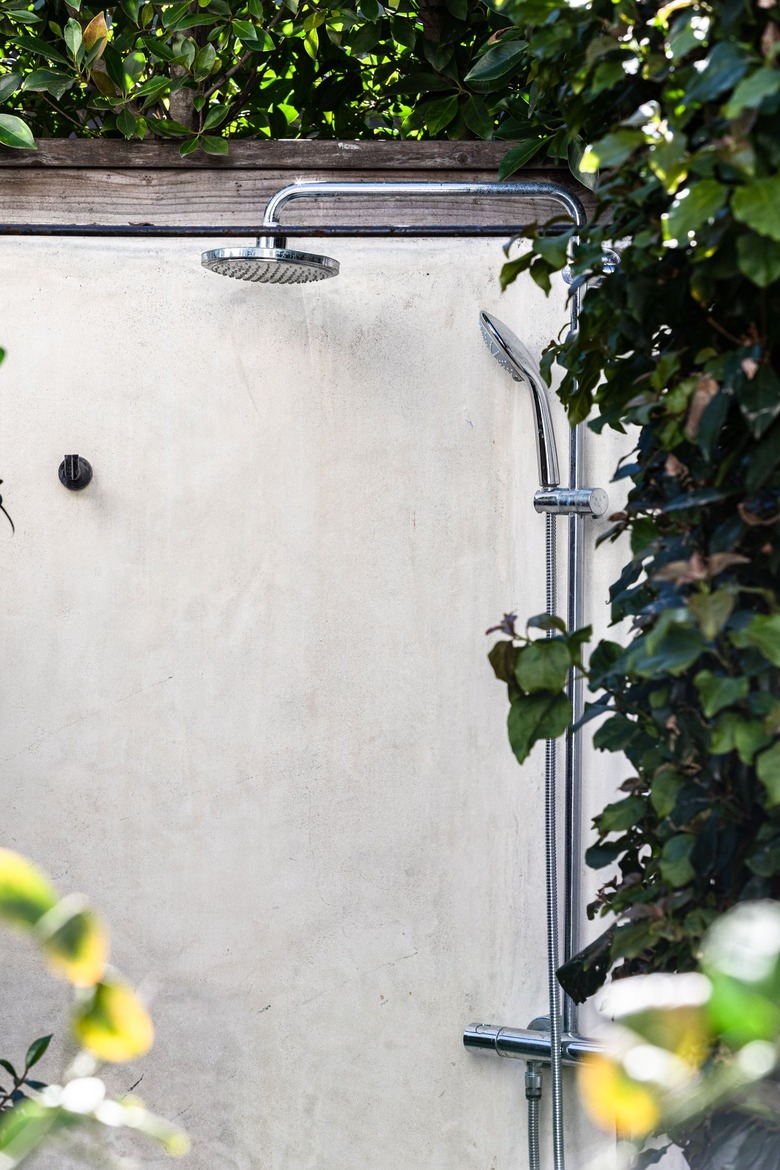Drainage For An Outdoor Shower
We may receive a commission on purchases made from links.
Outdoor showers can serve as practical, enjoyable and attractive additions to a landscape or building exterior. Although piping water to the outdoor shower may be given top priority, figuring out where the wastewater will go and how it will be directed can be equally important. There are multiple ways to install drainage for an outdoor shower, but a handful of factors or limitations must be accounted for.
Considerations for Outdoor Shower Drainage
Considerations for Outdoor Shower Drainage
Several factors should influence the drainage system design used for an outdoor shower. Municipalities often have ordinances that address outdoor shower construction and where water can drain to, so begin by familiarizing yourself with local codes and getting a construction permit if necessary. Consult all utility providers prior to digging to avoid coming into contact with any buried utilities as you dig the drainage trenches.
Other important things to consider before installing drainage in an outdoors shower include soil type, predicted usage or volume of wastewater produced, proximity to existing structures, and whether or not there is a perimeter drainpipe or French drain already present. Poor drainage can flood buildings, cause damage to landscapes or structures, and contaminate ground or surface water, so it's important to design a drainage system that works best for the unique location of the outdoor shower.
Option 1: Natural Drainage
Option 1: Natural Drainage
Under certain conditions, it may be suitable to simply let wastewater fall on the ground. This approach is most suitable where soil has a sand content and where water can percolate quickly and will not collect or build up. Heavy clay soils will not perform as well with this type of drainage due to their ability to hold on to water. Keep in mind that this type of surface runoff is not legal in some areas or under some circumstances.
Option 2: Dry Well
Option 2: Dry Well
Dry wells are common drainage options where soil is not sandy enough to withstand direct runoff. A dry well is essentially a layer of gravel through which the wastewater must percolate and filter. Dry well specifications may be governed by local ordinances, but the Outdoor Shower Company recommends an area that extends about 16 inches beyond the shower perimeter on all sides to a depth of about 4 feet.
Option 3: Shower Pan
Option 3: Shower Pan
A shower pan is a shower drainage option that involves catching and directing shower wastewater. Pans are often installed below the floor or are incorporated into the shower floor and can be plastic, fiberglass, rubber-lined or metal. The pan is connected to a drain that is either hooked up to the system that manages the household wastewater, or directed with hosing to irrigate trees, shrubs, ornamentals or select food crops.
Option 4: Existing Systems
Option 4: Existing Systems
In areas that are near lakes, streams or other bodies of water, it is commonly required or recommended that wastewater directly enter a septic or municipal sewer line rather than being allowed to drain freely. In this case, a shower pan or drainage system connected directly to the floor may be most suitable.
